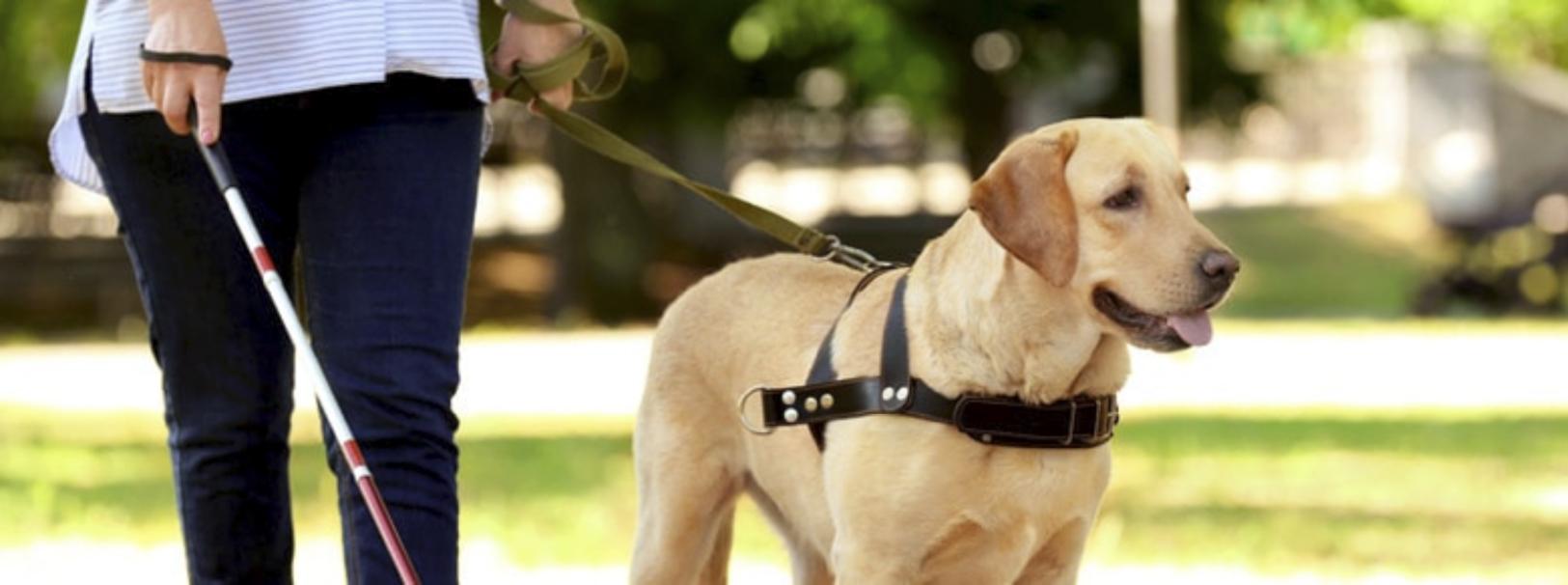Coping with the Cost of Care: Often-Overlooked Tax Deductions and Tips for Seniors and Their Families

By TaxAct ~
TaxAct shares these articles with us so our readers are more informed. Yes, this one is long but the information is very important for you and your loved ones. So, sit in a comfortable chair, grab a refreshing drink and read on. You’ll be glad you did.
As you get older, you may find you face more and more medical bills. No matter how great your insurance coverage is or if you are on Medicare, the out-of-pocket costs due to medical needs can add up. And if you or a loved one have a serious medical condition or disability; your costs can quickly get overwhelming.
The average medical care cost for seniors retiring today is around $280,000. The average cost of long-term care needs for seniors and disabled individuals is around $4,000-$7,000 per month. Clearly, these expenses add up quickly and can drain the resources of those who need care most. That’s why individuals and their caregivers need to understand all of the potential tax benefits they qualify for to ensure they are taking all possible deductions.
Thankfully, there are many tax deductions you can take for medical bills or the medical bills of someone in your care. In fact, around 9 million Americans currently claim tax deductions to help them lower their tax liability and pay for their medical care. But almost just as many taxpayers fail to take those deductions because they are simply uninformed.
This guide is designed to give you all of the information you need to claim the deductions you are due. Whether for yourself or for someone you love and care for, here is what you need to know about tax deductions for medical care.

Introduction to Qualified Medical Expenses
Anyone, regardless of age or disability, is allowed to take a deduction for what the IRS calls “qualified medical expenses.” If you have high medical bills, that is the first place to look for your tax deductions.
- Claim qualified medical expenses for medical costs above 7.5 percent of your income for 2018.For the 2017 and 2018 tax years, qualified medical expenses that are more than 7.5 percent of your adjusted gross income are deductible. The deduction will increase to 10 percent in 2019.
- Understand how the income percentages work. The qualified medical expenses are based on your Adjusted Gross Income (AGI). The percent (7.5 percent in 2018) is what you cannot deduct. So, if your AGI is $40,000, the first 7.5 percent of your medical expenses ($3,000) is not deductible. After that, you can deduct all of your medical expenses as long as they qualify.
- Itemize your deductions on your tax return.The only way to deduct qualified medical expenses is to itemize your deductions on your tax return.
- Determine whether itemizing is better for you than claiming the standard deduction. Sometimes, taking the standard deduction makes more sense than itemizing. If your filing status is Single, the standard deduction in 2018 is $12,000. If you are married filing a joint return, the standard deduction is $24,000. Sometimes, even with qualified medical expenses, the standard deduction is higher in value than your total itemized deductions. That means claiming the standard deduction is better because it reduces your taxable income more.
- Understand what is considered qualified medical care. Qualified medical care includes medical care of all types, like treatments, preventative care, surgeries, and prescription medications. If you pay a doctor or medical facility for a procedure, it likely qualifies as qualified medical care.
- Don’t forget vision and dental care. Vision and dental care, including contacts and false teeth, are considered qualified medical expenses.
- Deduct physiological and psychiatric care. Psychological and psychiatric care are included in qualified medical expenses as those are behavioral health services.
- Remember drug addiction treatment is also deductible.Mental health treatments are tax deductible, and the expenses are often well above the income threshold for qualified medical expenses.
- Do not deduct reimbursed medical expenses. If your insurance company, including Medicaid or Medicare, or your employer reimbursed you for the cost of care, that is not deductible.
- Do not deduct cosmetic or non-prescription drugs.With the exception of insulin, those items are considered optional to your health and are not deductible. If you’re looking for a tax break on those purchases, consider using your Health Savings Account or Flexible Spending Arrangement to pay for them.
- Do not deduct expenses you paid for with a Flexible Spending Arrangement or Health Savings Account. The money in those accounts already had a tax benefit applied, so you cannot deduct costs paid for with those funds.
- Use the IRS deduction tool.If you’re not sure about a deduction, the IRS has a tool that will help you determine if the expense is deductible.

Understand What Qualifies as a Qualified Medical Expense
The medical expenses you can deduct on your taxes go far beyond just the medical bills from your healthcare and procedures. Here’s a closer look at all of the costs you can deduct. Make sure you don’t overlook a single one!
- Keep receipts for your prescription medications. Any medication your doctor prescribes is deductible.
- Deduct doctor-prescribed nutrition supplements.If your doctor prescribes a nutrition supplement, like Ensure shakes, you can deduct the cost.
- Record money spent on incontinence supplies. Elderly or disabled individuals who need incontinence supplies often find the costs add up quickly. Fortunately, when prescribed by a doctor, that expense is deductible.
- Deduct the costs of visual aids for the visually impaired. Blind or otherwise visually impaired individuals can deduct the cost of their braille books and magazines. Other visual aids, like devices that magnify computer screens or reading material, are also deductible.
- Track the costs of travel, including mileage and parking fees.You can deduct bus fare if you ride the bus to your medical appointments.
- Keep tabs on the costs of artificial teeth or limbs.If you need to replace something lost to injury or illness with a medical device or prosthetic, it is considered a tax-deductible qualified medical expense.
- Track therapy and exercise costs. Many medical conditions require specific exercise programs to alleviate pain and strengthen muscles. Whether or not that is completed through an official physical therapy office, you can deduct the costs of your exercise program. That includes gym memberships, provided the exercise is used to treat a specific medical condition.
- Consider the cost of special dietary foods. If your doctor prescribes a specific diet that requires you to purchase costly food to alleviate your medical condition, you can deduct the cost of those foods.
- Understand that rent or utilities to help cover space for a nurse is covered. If an individual’s disability requires a live-in nurse or medical attendant, which increases the cost of rent or utilities, the extra living expenses are a deductible item.
- Deduct the cost of furniture required at a doctor’s advice. Sometimes a patient needs a specific piece of furniture for a medical condition. For example, someone with a cardiac condition may need a reclining chair to sleep safely. If a doctor recommends it, specialized furniture is deductible.
- Know how to deduct guide dog or service animal costs.Guide dogs or service animals are a great help to many, including visually-impaired individuals as well as patients with hearing or other physical disabilities. The cost of purchasing those animals is high, but it is deductible. You can also deduct the costs of the animal’s care, including food and grooming.
- Deduct non-traditional treatments. If you find relief in treatments like chiropractic or acupuncture care, but those costs aren’t covered by your insurance, you can deduct the cost on your taxes.
- Keep receipts for supportive clothing. If you or someone you care for suffers from a blood circulation issue, the elastic or supportive clothing used to reduce swelling is deductible.
- Understand you can deduct cosmetic procedures on occasion. If a doctor recommends a cosmetic procedure to improve a deformity or damage from a disease, it may be tax deductible.
- Deduct the cost of a smoking cessation program. Unlike other items on this list, if you choose to enroll in a smoking cessation program, you don’t need a doctor’s recommendation or prescription. However, you can still deduct that as a qualified medical expense.
- Keep track of the costs of swimming. If your doctor prescribes therapeutic swimming, and you need to pay to use a pool, that is a qualified medical expense. Some have even successfully deducted the cost of a swimming pool installation at their home when their doctor required swimming exercises.
- Know you can deduct a wig if your medical condition leads to hair loss. Patients with conditions that cause hair loss can deduct the cost of a wig or toupee.
- Deduct the cost of medically necessary home modifications. Adding a wheelchair ramp may be tax deductible if it is medically necessary for the disabled individual.
- Keep receipts for all co-payments. Co-pays add up quickly when someone needs extensive medical care, so keep those receipts with your medical expense receipts.
- Check the official IRS list to ensure you aren’t overlooking something. The IRS has an official list of qualified medical expenses that are deductible. Check that list to ensure you don’t overlook something. IRS Publication 502 outlines everything in detail.

Keep Good Records to Get All of Your Deductions
To deduct medical expenses, you must have solid records. It’s easy to lose track of your medical expenses as you go about your routines of receiving medical care. But you could miss out on critical tax deductions if you’re not careful. Here are some tips to help you stay organized.
- Pick up an accordion file folder, and keep it in an accessible place. That will provide a convenient location for storing receipts. Any medically related receipt should go into the accordion file folder. If you can, separate the files according to the type of medical need or supply. That will make it easy to add things up when tax time comes around.
- Write down details when needed. Bills from the doctor include details about what they cover. But receipts from stores may not be as clear. When you purchase something from a store for a medical need, make a note at the top of the receipt about why you purchased it.
- Pay separately for qualified medical expense items. To easily sort your expenses,pay for all qualified medical expenses separately when you check out at the store. That will give you a specific itemized receipt for your records.
- Record mileage on your car in a special notebook. If you use the same car to travel to and from medical appointments, record your mileage in a small notebook. Record the date, starting mileage, ending mileage and reason for the trip. Add the miles up at the end of the year to record your medical-related mileage. Remember you can record mileage for trips to the store for medical supplies. Mileage tracking mobile apps, like Everlance, also provide an easy and quick way to record your trips.
- Keep your records for at least three years. If your tax return is audited, you will need to show proof of your medical costs. Keep all medical expense receipts with your tax return for at least three years.
Still Concerned about Organization? These Dos and Don’ts May Help.
- Do pick a system that works for you. Make it easy to record your medical expenses. If your system is too complex, you won’t use it. If you’re managing the finances for someone else, and others are involved in their care, a complex system will likely not be used by everyone involved.
- Don’t record items that aren’t deductible. Remember, you can’t deduct items you are reimbursed for or that you paid for through another tax-benefit, like an HSA account. Only keep receipts for medical expenses that are true qualified medical expenses.
- Do record a little at a time. Trying to collect and add up all of your receipts at the end of the tax year is overwhelming. Updating your g records a little at a time is less time consuming and daunting.
- Don’t rent a safe or spend a lot of money storing your medical expense information. Medical expense receipts are not something that identity thieves are likely to target, so a home-based system is a great way to keep your records secure. If you have documents that contain your personal information, like a Social Security number, consider keeping that information locked in a safe.
- Do keep proof of payment. If you did not receive a receipt or a bill from a doctor, consider keeping your bank statement or credit card bill that shows proof of the charge and that you paid the medical bill.
Tip: Your pharmacy and your bank can give you statements at the end of the year, summarizing your health-related spending. Those statements may not include everything, but they can at least give you a birds-eye view of your totals. It also might help you catch things you missed.

Managing Home Health Aides and Other Employees
When someone has a serious disability or needs round-the-clock medical care, you may need to hire a home health aide. Having an employee like this as part of your family can get complex when you are looking at the financial side of things. Here are some tips to help you manage your home health aides and to ensure you take advantage of the full tax benefits available when you hire a care provider.
Choosing the Right Care Provider
The right person makes a huge difference when it comes to a successful caregiver and patient relationship. Here are some tips to help you find the right one.
- Consider hiring someone privately rather than working through an agency. Working through an agency helps you with background checks, but hiring someone directly can save you money. In that scenario, there is no middleman to pay, and all of the money you spend on your loved one’s health care goes directly to the person providing the care.
- Write down all of the care your loved one needs. Before looking for a caregiver, make sure you understand what level of care is needed. For example, if your loved one needs help bathing, they may prefer a same-gender caregiver. If your loved one needs to be lifted, you need a caregiver who is strong enough to do the job.
- Talk to others who have used a home health aide. Rather than buying an advertisement, consider talking to friends and family who needed a home health aide. That can help you find a one who is well qualified for the job and recommended by a trusted source.
- Perform a background check. With very little effort, you can perform a background check on a candidate. Background checks uncover any problems on the individual’s record and help reduce the risk of hiring a dangerous individual to help with your loved one’s care. You can search many types of records for free online, or you can use the individual’s Social Security number to perform a background check through a company for a small fee.
- Have interviews with your short list of potential caregivers.Conduct face-to-face interviews with the people you consider for the job. Face-to-face interactions give you a good feel for the individual’s personality and demeanor. If possible, have your loved one participate in the interview. After all, it is their care that the individual will be handling, so they should feel comfortable with the choice.
Paying Your Home Healthcare Worker
When you hire a home health care worker, you must complete all of the paperwork correctly to ensure taxes are properly paid. Here’s how:
- Decide how you will pay your home health care worker. In order to deduct the expense of your home health care worker, you have to pay them legally. That means you can’t just give them cash payments. You must pay them as an independent contractor or as an employee. If you choose the employee route, you must withhold taxes and send them Form W-2 at the end of the tax year.
- Ask for an Employer ID Number. If you are withholding taxes on behalf of your home health aides, you need to acquire an Employer ID Number from the IRS.
- Fill out Form I-9. Form I-9 is the Employment Eligibility Verification, which shows that a home health aide has the required documentation to prove his or her eligibility to work in the United States. Keep that form with your tax records because the government can request to see it at any time.
- Calculate and withhold taxes before paying your caregiver. If you elect to hire your caregiver as an employee, you need to withhold Federal income tax, state income tax, Social Security tax and Medicare tax from his or her payments. Record the amount withheld every time you pay the caregiver, or consider using a payroll system to do it for you. Keep in mind that withholding Federal income tax is not required by law, but your employee may request that you withhold it. If so, you should collect Form W-4 from the employee to understand how much tax to withhold.
- Pay your taxes quarterly.Whatever taxes you withhold should be paid to the government on a quarterly basis. If you have trouble calculating the taxes, contact a local payroll provider.
- Provide Form W-2 at tax time. If you withhold taxes and pay your home health aide as a home employee, you need to send him or her Form W-2 at tax time. That form reports their wages and the amount of taxes withheld. Your caregiver needs it to file his or her tax return.
- Add insurance coverage to your homeowner’s policy.Double check with your insurance provider to see if a home caregiver is covered in your existing home insurance policy. If the answer is no, add additional coverage to give yourself a safety net in case something should happen.
- Create a contract. Draft a formal contract that outlines your expectations of the home health aide, the hours the aide works, and the payment details. That will help you not only ensure there are no misunderstandings, but also help you get Medicaid coverage to pay for the cost of your home health worker.
Planning for Absences
- Remember to plan for illness and vacation.Even after you find the perfect home health care help, you need to plan for vacation and illness. When that home health aide is not available, have a standby person you can trust to cover the gap.
- Have at least two people who can serve as a standby. If you don’t have an aide in the home caring for your loved one, the care will fall on you, so cover these bases from the beginning. Of course, if you have the flexibility to be the fallback option, then that’s a great choice. But if you are not local or have other responsibilities, you need to be certain the job is covered. No caregiver, no matter how responsible he or she is, can be available without an occasional break.
- Consider an agency for on occasion care. Even if you hire a home employee to handle the daily care, you can use an agency for occasional absences.

Durable Versus Non-Durable Equipment
When you purchase medical equipment for the care of your loved one, it falls into one of two categories: durable and non-durable. Understanding those categories helps you plan your expenses and taxes. Here’s a closer look at what these two terms mean.
Defining the Terms
- Determine your durable goods purchases. Durable goods are items that do not wear out and are not purchased regularly. That includes specialized furniture, wheelchairs, mobility assistance devices, service animals and similar categories of items. They tend to be expensive purchases.
- Outline your non-durable goods needs. Non-durable goods are consumable items. They are items that are used up quickly or in less than three years. In eldercare, non-durable goods include medications, nutritional support, incontinence supplies, medical clothing or footwear, and paper products needed for care. They usually are a bit more affordable than the durable goods.
Planning for Purchases
- Determine what large purchases Medicare will cover. Durable medical equipment is often a sizable investment. Medicare covers many items, so make sure to check what those are before purchasing anything. Items that are medically necessary are generally covered by Medicare. Items that are helpful, but not medically necessary, are not covered. That often includes items like grab bars, stairway elevators, or motorized scooters for those who can walk. Also, many non-durable goods, specifically if they are thrown away after use, are not covered. The exception to that rule is the disposable medical supplies a home health care worker uses for medical care.
- Consider the necessity of an item. When you care for an elderly loved one, you may find there is a myriad of items that are nice to have, but not medically necessary. Prioritize your list of purchases, and start with those that are the most necessary.
- Rent items instead of buying when that is an option. If you need an item for a short period of time or if the cost is extremely high, you could rent it instead of purchasing it. In addition to the benefit of a lower cost, renting means maintenance services are worked into the contract. If the item breaks, repairing it won’t be your responsibility.
- Consider payment arrangements.If your loved one does not have a large amount of savings to cover the cost of a piece of medical equipment, consider establishing a payment arrangement. Small monthly payments often fit into the budget better than a big lump-sum purchase.
- Contact charitable organizations to look for help. Charitable organizations like United Way and Easter Seals may have programs to help you pay for durable medical equipment and independent living aids. Find which ones are located in your area, and don’t hesitate to ask for help if it’s available.
Properly Deduct Medical Equipment
- Understand the tax implications of your durable medical equipment. Durable medical equipment is deductible only when it is ordered by a doctor and used to alleviate or prevent physical or mental illness. Those items used for general health not related to a medical condition are not deductible as durable medical equipment.
- Deduct the amounts paid in the current tax year. Deductions are only available for amounts paid in the current tax year. That means you must only include the cost of your rental or monthly payment for the year, rather than counting the full cost of the equipment.
- Remember that equipment is only deductible if it is deemed “medically necessary”.The easiest way to prove an item is medically necessary is to have your loved one’s doctor provide a written recommendation for the item as it relates to their medical condition.

Find Help Paying for Medical Costs
The cost of medical care can be overwhelming for families, especially for seniors or disabled individuals. Social Security, retirement, and disability income are quite limited. And when you don’t have enough to cover the cost of medical care, the bill can fall into your family’s lap. Thankfully, there are many programs available to help those who struggle to pay for medical costs get the money they need. Here are some ideas.
Government Resources
- If your loved one qualifies for Medicare, use that to pay for as much of the medical care as possible. Medical equipment is often covered by Medicare if you have a prescription for it.
- Tap Medicaid and Medicare for home health care services. Around 41 percent of people with Medicare and 24 percent of those with Medicaid can use those government programs to pay for home health care. To qualify, your loved one’s doctor must certify the need for skilled nursing care or must certify that the patient is homebound. Keep in mind that Medicare only pays for a part-time skilled nurse, not a home health aide or 24-hour-a-day care.
- Check state and local services for elders.Medicaid and other state-based programs for elderly individuals provide support for home health care and medical care. Check with your state’s department of aging to determine what health and home care services are available to your loved one on a state basis.
- Look for help specific to veterans. If the one needing home health care is a veteran, the Housebound benefit may cover the cost of in-home care. That benefit is paid as an increase to the veteran’s monthly pension.
- Locate local programs that assist with medical equipment purchases.There are many local non-profits that have programs in place to assist seniors and the disabled with paying for their medical equipment. Tap into those in your local area.
Non-Profit Organizations
When government programs aren’t sufficient, you can also look to non-profit organizations for help.
- Contact the Family Caregiver Alliance. The Family Caregiver Alliance operates the National Center on Caregiving, which helps provide information to caregivers to support them in their work. It has information about places to get assistance with medical care.
- Reach out to the Rehabilitation Engineering and Assistive Technology Society of North America. Sometimes this organization offers help to those who need home health care devices to help them with daily living.
- Get in touch with your local United Way. United Way partners with local communities to provide help accessing health services to those who need it most. They may have a program in your area that can help your loved one. They offer programs specific to the aging population that are worth looking into for financial help.
Other Options
There are other creative ways to get the money you need to pay for medical care.
Consider these options:
- Negotiate with your provider. If you can pay cash, ask for the “cash rate.” Because there is much less paperwork with those cash transactions, medical offices often pass on some of their savings to the customer. You can also ask for a payment plan or sliding scale billing.
- Consider private fundraising.Sometimes private fundraising to cover the cost of medical care for an elderly or disabled loved one is helpful. That method is hit or miss and depends on the size of your network. You can use sites like GoFundMe or private fundraising events to raise money.
- Use a reverse mortgage to pay medical expenses. If your loved one owns his or her home, tap into the equity through a reverse mortgage. That can give you monthly income to pay for your medical expenses. Just remember that a reverse mortgage uses up the home’s equity, which could change what is available in the estate when the homeowner is ready to sell or passes away.
- Track all income you get to pay for medical care. When your medical care is covered through Medicare or another source, you cannot claim that particular expense as a deduction. Keep clear records to ensure you take all possible deductions and avoid problems with the IRS.
- Use the cash value of life insurance.If the individual has a life insurance policy with a cash value, you can tap into that to pay for medical care.

Medicaid Planning Tips
Medicaid is a state-based but federally backed program designed to help low-income individuals pay for medical care. Specifically, Medicaid can cover the cost of long-term care, for qualified individuals, which is often quite substantial. However, because Medicaid is a needs-based program, a senior or disabled individual does not qualify if he or she already has substantial assets available to cover the costs.
Those who plan carefully for retirement may find they have too much saved to qualify them for Medicaid. If your loved one could benefit from Medicaid, you could transfer assets into a trust or to family members while the senior is still alive to enable him or her to qualify. That process is known as Medicaid Planning, and there are many lawyers and accountants who specialize in it. Here are some tips to help you with that important step.
- Know the current income limits for Medicaid.While the limits vary from state to state, most have an income limit of around $2,205 per month per person. That includes Social Security income. In addition, the individual can’t have any assets, outside of their home, that are valued over a few thousand dollars.
- Consider transferring assets to the individual’s spouse. If the individual’s spouse is living and not in need of Medicaid coverage, the assets in the household can be transferred into the spouse’s name to make the individual eligible. There is no penalty for that move. All assets can also be moved to someone else as long as they are used for the sole benefit of the individual’s spouse, such as being given to a family caregiver.
- Save bank statements. Generally, it’s good to save around five years of bank statements to show to Medicaid case workers as needed. They may be needed to prove there are no hidden assets that are not claimed properly.
- Move assets to a disabled child without penalty. If the individual has a disabled child, the assets may be moved to that child or to the trust established for the child’s care without penalty.
- Do not give away assets improperly. If someone gives away a bunch of assets and then applies for Medicaid within five years of the gift, the government will assume the gift was made specifically to qualify for Medicaid. That can trigger ineligibility for a period of time. For that reason, families should always contact a Medicaid lawyer before beginning any Medicaid planning.
- Place money in a trust early. If you anticipate the need for Medicaid in the future, consider establishing a trust early. A trust protects money while helping the individual qualify for Medicaid coverage. Check your state’s limits to ensure your trust is not too large to prevent you from qualifying for Medicaid.
- Use a Medicaid compliant annuity. If your loved one is at a point where it’s impossible to avoid a period of ineligibility between gifting or transferring an asset and receiving Medicaid, you can place some of the assets into a Medicaid compliant annuity. That annuity pays for the individual’s medical care for the duration of the penalty period until Medicaid is available.

The cost of medical care is constantly increasing. If you do not plan carefully and have a disabled or elderly loved one, you may find it’s nearly impossible to cover the cost of care.
Additionally, you could miss out on important benefits that lower the tax responsibility of either you as the caregiver or your loved one as the recipient of care. Thankfully, there are many options available to help you manage the cost of care and ensure you claim the right deductions. Take advantage of the programs mentioned in this article to ensure you or your loved ones receive proper care as long as it is necessary.






